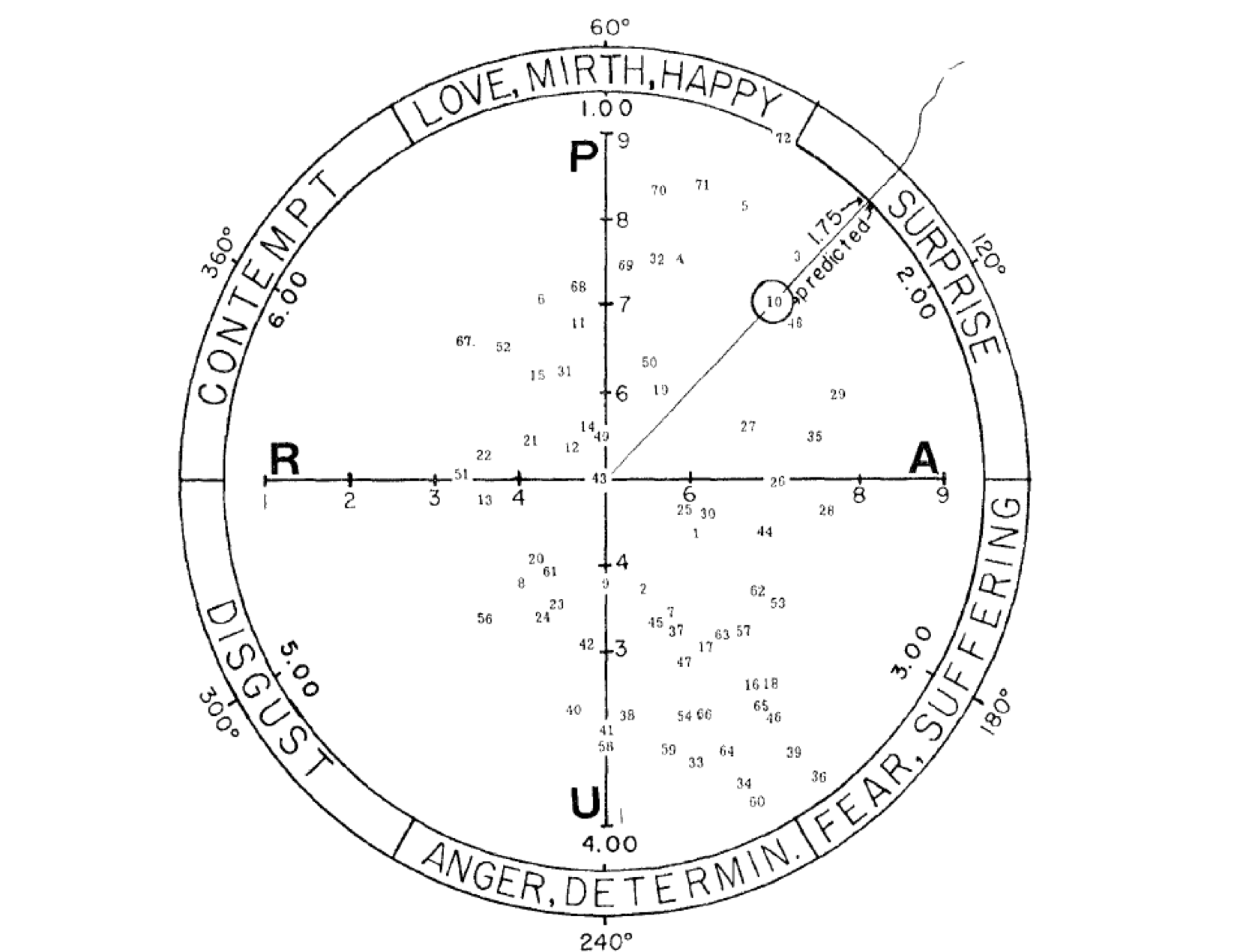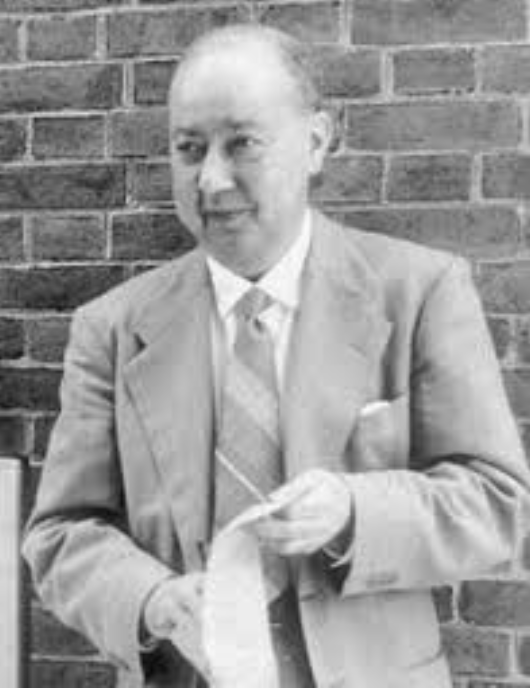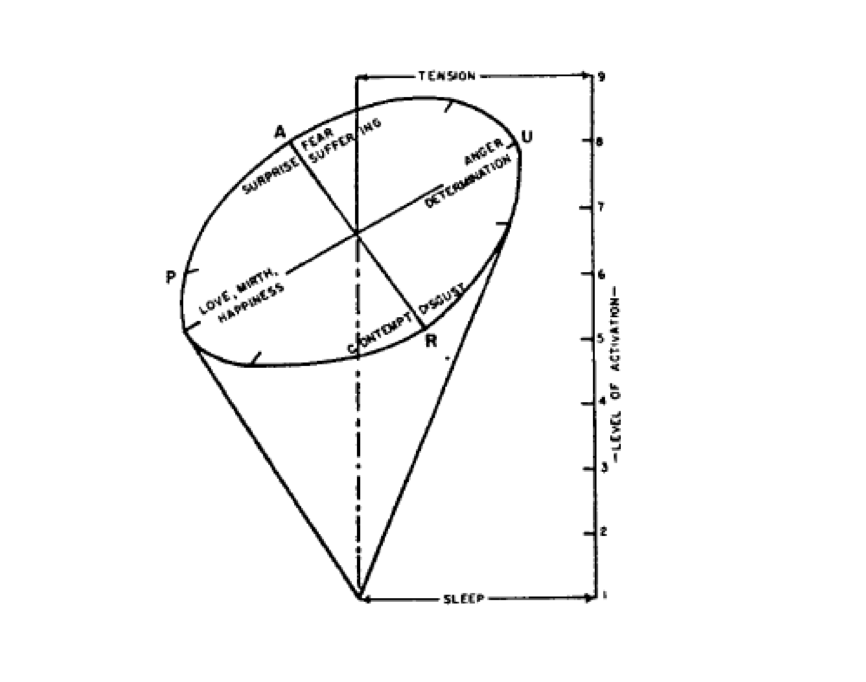Chapter 5: Dimensional Models
Schlosberg’s (1941) Revised Woodworth Emotion Scale
After Woodworth developed his scale, Schlosberg revised this scale in 1941. Schlosberg asked participants to group 200 facial expressions into six bins based on similarity in facial expressions. A major finding from his study was that participants tended to group happiness and contempt emotions in the same bin – indicating these two facial expressions were similar. But Woodworth had placed contempt and happiness on opposite poles of the dimension, which would suggest happiness and contempt were not related to each other. Based on his findings, Schlosberg decided Woodworth’s one dimension should be changed to a circumplex. A circumplex means that emotions words are arranged around a circle, such that emotions closest in space to each other are most similar to each other. By revising to a circle, this would allow happiness and contempt to be placed in the same place. Circumplex models are developed around at least 2 dimensions, so this change suggested that two dimensional underlie emotions, not one as Woodworth thought!
What are the two poles Schlosberg identified? Schlosberg labeled one dimension pleasant/unpleasant and the second dimension attention/rejection (see Figure 2). Per his model, happiness (coded as 1) was most pleasant because it fell on the pleasantness/unpleasantness dimension, and anger was labeled as most unpleasant. The attention/rejection dimension measured whether people focused their attention when experiencing an emotion or engaged in more rejection/avoidance behavior. Surprise (2) and fear (3) were highest in attention, and disgust (5) and contempt (6) were highest in rejection. Using this model, ANY emotion should be described on the pleasant/unpleasant and attention/rejection dimensions. For instance, contempt (6) is high in rejection and high in pleasantness, according to Schlosberg’s theory.
Figure 2
Schlosberg’s Original Two dimensions of Emotion

Note. In this model, the P-U dimension stands for pleasant-unpleasant. The R-A dimension stands for rejection-attention. Reproduced from “The description of facial expressions in terms of two dimensions,” by H. Schlosberg, 1952, Journal of Experimental Psychology, 44(4), p. 232 (The description of facial expressions in terms of two dimensions.). Copyright 2016 by the American Psychological Association.
Long Description
This image is a circular diagram representing Schlosberg’s original two-dimensional model of emotion. Emotions are arranged around the circumference of a circle, with angular positions indicating their relationship to two intersecting axes:
Axes at the Center
- P (Positive)
- R (Rejection)
- U (Unpleasant)
- A (Acceptance)
These axes divide the circle into four emotional quadrants, suggesting how emotions relate to dimensions of valence (pleasant–unpleasant) and approach–avoidance tendencies.
Emotions Around the Circle
- LOVE, MIRTH, HAPPY – Positioned around 60°
- SURPRISE – At 120°
- FEAR, SUFFERING – Around 180°
- ANGER, DETERMINATION – At 240°
- DISGUST – At 300°
- CONTEMPT – At 360°
Various numerical values are plotted within the circle, possibly representing intensity or coordinates along the emotional dimensions.
This model visually maps how emotions are interrelated and how they can be categorized based on their affective tone and motivational direction
Figure 3
Schlosberg’s Three Dimensions of Emotion
Long Description
This image is a cone-shaped diagram that organizes emotions based on their level of activation, from low (sleep) to high (tension). The diagram is divided into four emotional quadrants, each representing a cluster of related emotions, and is structured around two axes:
Vertical Axis: Level of Activation
- Ranges from 1 (Sleep) at the base to 9 (Tension) at the peak.
- Represents the intensity or arousal level of emotional states.
Horizontal Quadrants (Emotion Clusters)
- Top Left Quadrant:
- SURPRISE
- FEAR
- SUFFERING
- These emotions are high in activation and often associated with threat or uncertainty.
- Top Right Quadrant:
- ANGER
- DETERMINATION
- High-activation emotions linked to assertiveness or confrontation.
- Bottom Left Quadrant:
- LOVE
- MIRTH
- HAPPINESS
- Lower-activation, positive emotions associated with connection and joy.
- Bottom Right Quadrant:
- CONTEMPT
- DISGUST
- Emotions that are often socially distancing or rejecting, with moderate to low activation.
The cone shape visually emphasizes how emotions vary not just in type, but in intensity, with more activated emotions appearing higher on the cone.
Note. In this model, the P-U dimension stands for pleasant-unpleasant. The R-A dimension stands for rejection-attention. Reproduced from “Three dimensions of emotion,” by H. Schlosberg, 1954, Psychological Review, 61(2), p. 87 (The description of facial expressions in terms of two dimensions.). Copyright 2016 by the American Psychological Association.



